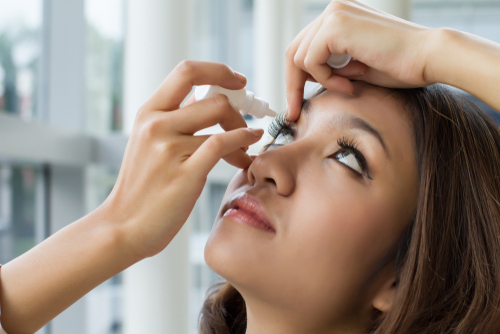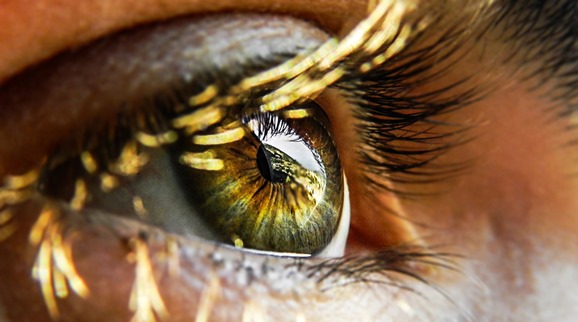Dry Eye & Keratoconus

Common KC Mistakes to Avoid
February 5, 2021
Identifying a KC Gene
February 18, 2021Dry Eye & Keratoconus
Itchy eyes
Scratchy eyes
Blurry vision
Tired or Fatigued eyes
Sensitivity to Light
This list reads like symptoms someone with keratoconus may experience. They are also some of the most common complaints of those suffering from Dry Eye Disease.
Dry eye syndrome is a common condition affecting all ages and ethnic groups. The symptoms can be mild or moderate to quite severe. Dry eye develops when an individual does not produce enough tears, the tears evaporate too quickly, or they do not nourish the eye effectively. Tear film is composed of nutrients, electrolytes, proteins and lubricants. If the tears lack any of these components, the result is a lack of moisture or lubrication across the surface of the eye.
Certain medications like antihistamines (e.g. Claritin, Benadryl, or Zyrtec) or hormonal replacement therapy may cause dry eye. Smokers and those who face environmental challenges like a windy or dry climate often complain of dry eye. Certain diseases are also associated with dry eye: for example, individuals with keratoconus (KC) are at an increased risk of developing dry eye symptoms.
Because many of the complaints associated with KC and dry eye are identical, your eye doctor may need to determine which symptoms are the result of KC, and which can be relieved through available treatments for dry eye disease. Your doctor can discuss your medical history and lifestyle and test the composition of your tears to determine the reason for the dry eye sensation and discomfort. The variety of treatments available for dry eye expands as our understanding of this disease evolves.
Dr. Melissa Barnett, OD, FAAO, FSLS, of the University of California, Davis is a leading authority on the use of specialty contact lenses for the management of KC. In her clinics located in Davis and Sacramento, she also treats a number of patients suffering from dry eye disease. According to Dr. Barnett, her treatment plan generally begins with the following, “Initial management strategies may include over-thecounter artificial tears such as Blink GelTears, Refresh Optive, Systane, or TheraTears.”
She continued, “I also stress eyelid hygiene including eyelid cleaners and warm compresses. Omega-3 dietary supplements such as Science Based Health HydroEye or Physician Recommended Nutriceuticals Dry Eye Omega Benefits, and foods rich in omega-3 fatty acid such as salmon, flax seed, or chia seed provide relief of dry eye symptoms for many patients.”
“In more severe cases, punctal plugs – very small plastic pieces that close the ducts that drain tears out of the eye may be put into the eye.” Dr. Barnett added that nighttime moisture goggles or daytime moisture release eyewear may be recommended.
Dr. Barnett has found that scleral lenses are beneficial to relieve the discomfort of dry eye while offering excellent vision to those with KC. She concluded that some of her dry eye patients will require prescription medications for relief, “For severe dry eye symptoms, I recommend certain prescription eyedrops such as Restasis, Cequa, Xiidra, autologous serum tears, or biologic eyedrops.”
If you believe you have dry eye disease, visit your eyecare practitioner for an evaluation and discuss options to relieve your symptoms. You can learn more about dry eye syndrome by visiting All About Vision. More information about some products helpful in relieving dry eye symptoms can be found at the Dry Eye Shop.
 Dr. Melissa Barnett, OD, FAAO, FSLS is a Principal Optometrist at the Univ. of California, Davis Eye Center, specializing in specialty contact lenses and dry eye disease. She is a lecturer, teacher, author and member of a number of specialty societies. Dr. Barnett is a Fellow of the American Academy of Optometry and past president of the Scleral Lens Education Society.
Dr. Melissa Barnett, OD, FAAO, FSLS is a Principal Optometrist at the Univ. of California, Davis Eye Center, specializing in specialty contact lenses and dry eye disease. She is a lecturer, teacher, author and member of a number of specialty societies. Dr. Barnett is a Fellow of the American Academy of Optometry and past president of the Scleral Lens Education Society.



